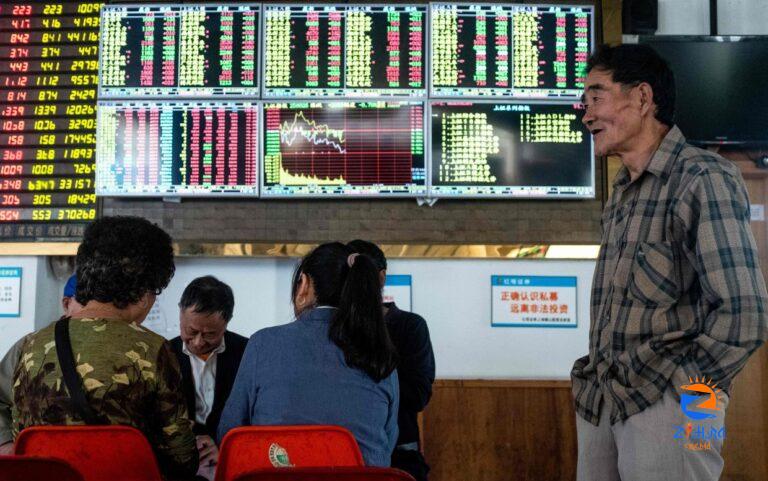
[ad_1]

SINGAPORE: Asian stocks traded cautiously and bonds fell on Thursday while investors waited on more detail of China’s stimulus plans and for a European Central Bank meeting later in the session.
The dollar bounced from lows after a survey showed U.S. business activity picking up in January. The Canadian dollar fell after the Bank of Canada held rates but dropped language that had said it was prepared for further hikes.
MSCI’s broadest index of Asia-Pacific shares outside Japan was up 0.5% in early trade, with the Hang Seng opening 0.6% higher and mainland indexes steady.
Japan’s Nikkei fell 0.3%.
The strong U.S. data and a cut in Chinese bank reserve requirements, releasing about a trillion yuan ($140 billion) for lending, had cheered investors – lifting the S&P 500 to a record high and world stocks to a two-year peak.
China’s cut came on the heels of a collapse in China’s equity markets that pushed the Shanghai Composite to a four-year low on Monday and hammered the Hang Seng. Along with a Bloomberg report that China is mulling a big rescue fund for the stockmarket, it seems to have stabilised things for now but without inspiring much confidence yet in the outlook.
“This is not the panacea that will change the narrative too much,” said Tim Graf, head of Europe, Middle East and Africa macro strategy at State Street in London.
“More targeted stimulus would be a more powerful lever to push and they seem to be reluctant to do that.”
The Hang Seng is trading 8% above Monday’s 15-month low, but it remains down more than 6% for the year to date and almost 20% below where it began 2023. World stocks are up 21% since then.
S&P 500 futures were 0.1% lower in Asia, as were Nasdaq 100 futures, dragged by a 6% drop in Tesla shares after the bell following earnings that missed expectations and a warning of a sales slowdown ahead.
South Korea beat expectations for growth in the fourth quarter of 2023, though the Kospi slipped and the won was steady.
YIELDS RISE
In currency markets gains for the Australian dollar on optimism that China is putting together a stimulus package proved shortlived. The Aussie handed back gains overnight and was down 0.1% at $0.6569 in the Asia morning.
The euro was steady at $1.0875, while the yen was holding firm on the strong side of 148 to the dollar after hints at rate rises in Japan triggered a sharp sell off in the Japanese government bond market.
The Bank of Japan left rates on hold this week but governor Kazuo Ueda said it was looking more likely that inflation would sustainably reach the bank’s 2% goal. Ten-year Japanese government bond yields rose 2.5 bps to 0.73%.
Global bond markets have also been under pressure as traders pare back expectations for rate cuts.
Wednesday’s strong activity data drove two-year U.S Treasury yields from lows overnight and they were steady at 4.37% in Asia. The European Central Bank is likely to push back on investor bets for aggressive policy easing this spring at its policy meeting later on Thursday.
Interest rate futures price about a 40% chance of a U.S. rate cut in March, down from 75% at the start of last week.
“For you to get rate cuts in March, we need to see bad data next month,” said Remi Olu-Pitan, head of multi-asset growth and income at Schroders at an outlook briefing in Singapore.
“And if that comes through there’s a problem for equities,” she said, since they are not priced for weakness.
The apparent contradiction will most likely “normalise through bond yields rising,” she said.
In commodity markets Brent futures were 0.2% higher at $80.22 a barrel. Singapore iron ore steadied at $135 a tonne while London copper had shot to a three-week high on hopes of more stimulus measures from China. – Reuters
[ad_2]